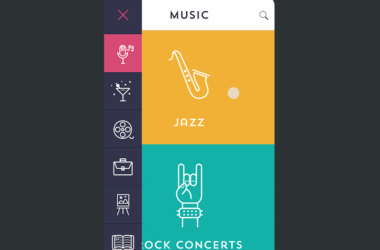Prototypes play a crucial role in product development and business strategy. They serve as tangible representations of ideas, allowing designers, stakeholders, and customers to visualize, test, and refine concepts before full-scale development. Whether in digital products, physical hardware, or service design, prototypes enable businesses to reduce risks, optimize resources, and enhance user experiences. In this article, we explore the importance of prototypes in business and how designers can leverage them to establish their ideas and bring value to an organization.
What is a Prototype?
A prototype is a preliminary model of a product or service that allows designers and stakeholders to interact with it before final production. It can be a low-fidelity sketch, an interactive wireframe, a clickable digital mockup, or even a functional version of the final product.
For example, in the automotive industry, car manufacturers build prototype vehicles to test aerodynamics, safety features, and overall performance before mass production. These prototypes undergo rigorous testing to ensure they meet quality and regulatory standards. Similarly, in the food industry, companies often test new cookie flavors by offering free samples in shopping malls. This helps them gather customer feedback and determine whether a new product is worth launching on a larger scale.
Prototypes help bridge the gap between conceptual ideas and real-world implementation.
What is Prototyping?
Prototyping is the process of creating an early sample, model, or release of a product to test its concept, design, and usability. It involves iterating on a design by building and refining versions of a product before reaching the final production stage.
Prototyping can take many forms, depending on the industry and purpose. In digital design, it can be as simple as a paper sketch or as complex as a high-fidelity interactive prototype in a tool like Figma or Adobe XD. In hardware development, companies use 3D printing or physical models to create prototypes for testing durability and functionality. Regardless of the format, prototyping serves as a critical step in product development, allowing designers and businesses to validate their ideas, receive feedback, and make necessary improvements before committing to full-scale production.
Importance of Prototypes in Businesses
1. Validating Ideas Before Investment
Prototyping helps businesses validate ideas before committing significant time and financial resources. By creating a prototype, companies can test their concepts with real users, gather feedback, and make necessary improvements early in the development process.
2. Enhancing Communication and Collaboration
Prototypes serve as a communication tool between designers, developers, marketers, and stakeholders. Rather than relying solely on verbal or written descriptions, a prototype offers a visual and interactive representation, making it easier to align everyone’s understanding and expectations.
3. Reducing Development Costs and Risks
Launching a product without thorough testing can lead to costly errors. Prototyping allows businesses to identify potential usability issues, design flaws, and technical challenges early on. By addressing these concerns during the prototype phase, businesses can avoid expensive rework in later stages.
4. Faster Time-to-Market
Prototypes speed up the design and development cycle by allowing rapid iterations. Businesses can test different versions of a product quickly, making improvements in real time. This agility helps organizations respond to market demands faster and stay ahead of competitors.
5. Improving User Experience and Satisfaction
User-centered design is essential for product success. Prototypes enable designers to conduct usability tests and ensure that products meet user needs. This leads to improved customer satisfaction and higher adoption rates.
6. Supporting Investor and Stakeholder Buy-In
Investors and stakeholders are more likely to support a project when they can see and interact with a prototype. A well-executed prototype provides a compelling case for investment by demonstrating feasibility and potential market value.
How Designers Can Use Prototypes to Bring Value to Organizations
1. Brainstorming and Ideation
Prototypes allow designers to experiment with different ideas and refine concepts before committing to a final design. By creating multiple versions, designers can explore innovative solutions and make data-driven decisions.
2. Testing Usability and Functionality
Designers use prototypes to conduct usability testing, ensuring that products are intuitive and user-friendly. Gathering feedback from real users helps refine navigation, interactions, and overall user experience.
3. Presenting Concepts to Stakeholders
A well-crafted prototype can effectively communicate design concepts to stakeholders and decision-makers. This makes it easier to secure approval and funding for projects.
4. Facilitating Agile Development
In Agile and Lean development processes, prototypes help bridge the gap between design and development. They provide developers with a clear roadmap, ensuring that design intentions are accurately translated into the final product.
5. Driving Innovation and Competitive Advantage
Organizations that prioritize prototyping foster a culture of innovation. By continuously testing and refining ideas, businesses can stay ahead of market trends and deliver superior products.
Conclusion
Prototypes are invaluable tools that help businesses mitigate risks, reduce costs, and deliver better products. They empower designers to test, refine, and communicate ideas effectively, ultimately contributing to business success. By incorporating prototyping into the design process, companies can enhance collaboration, accelerate development, and create products that truly meet user needs. Whether you’re a startup or a large enterprise, leveraging prototypes is a strategic move that ensures long-term growth and innovation.










